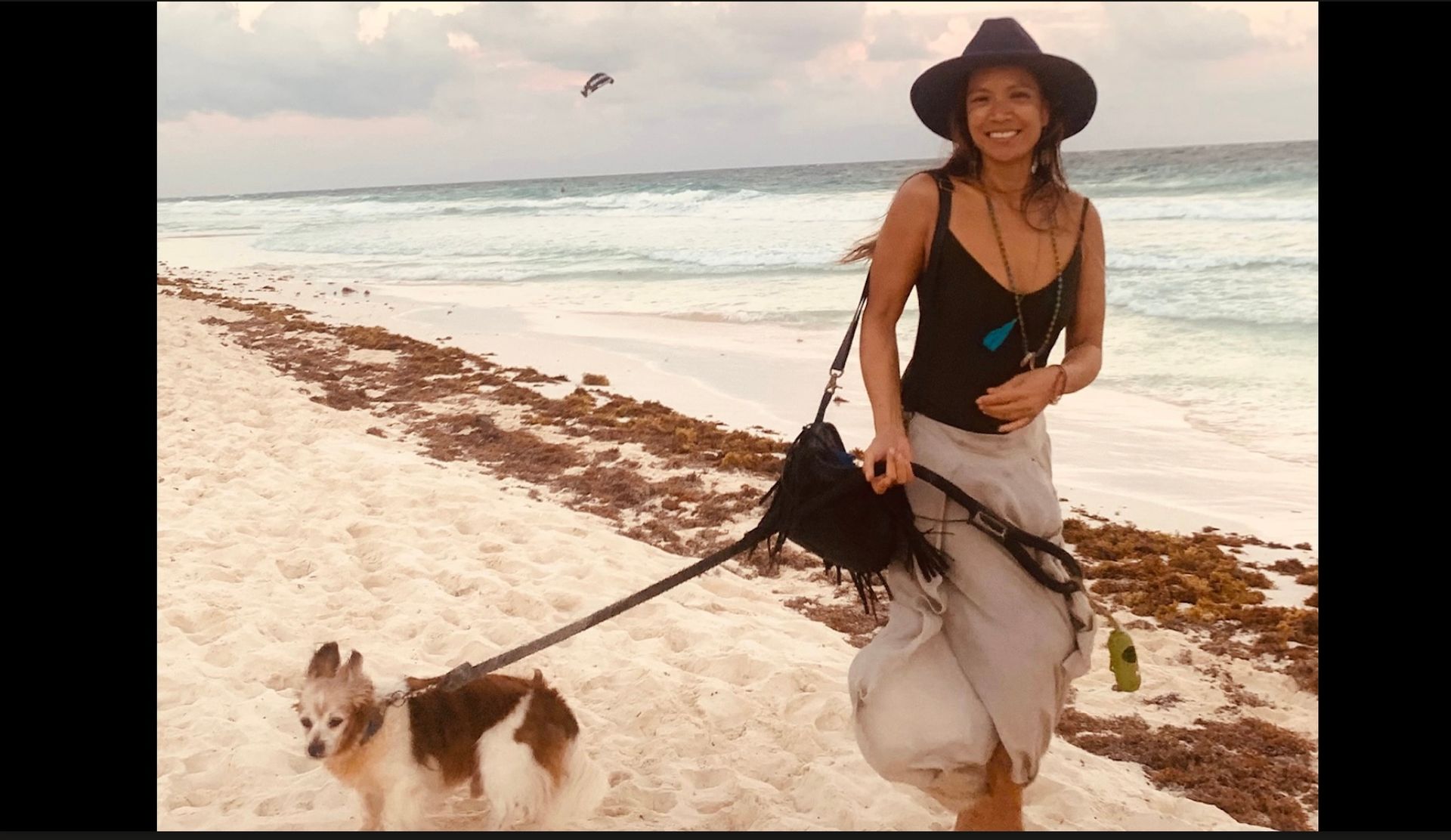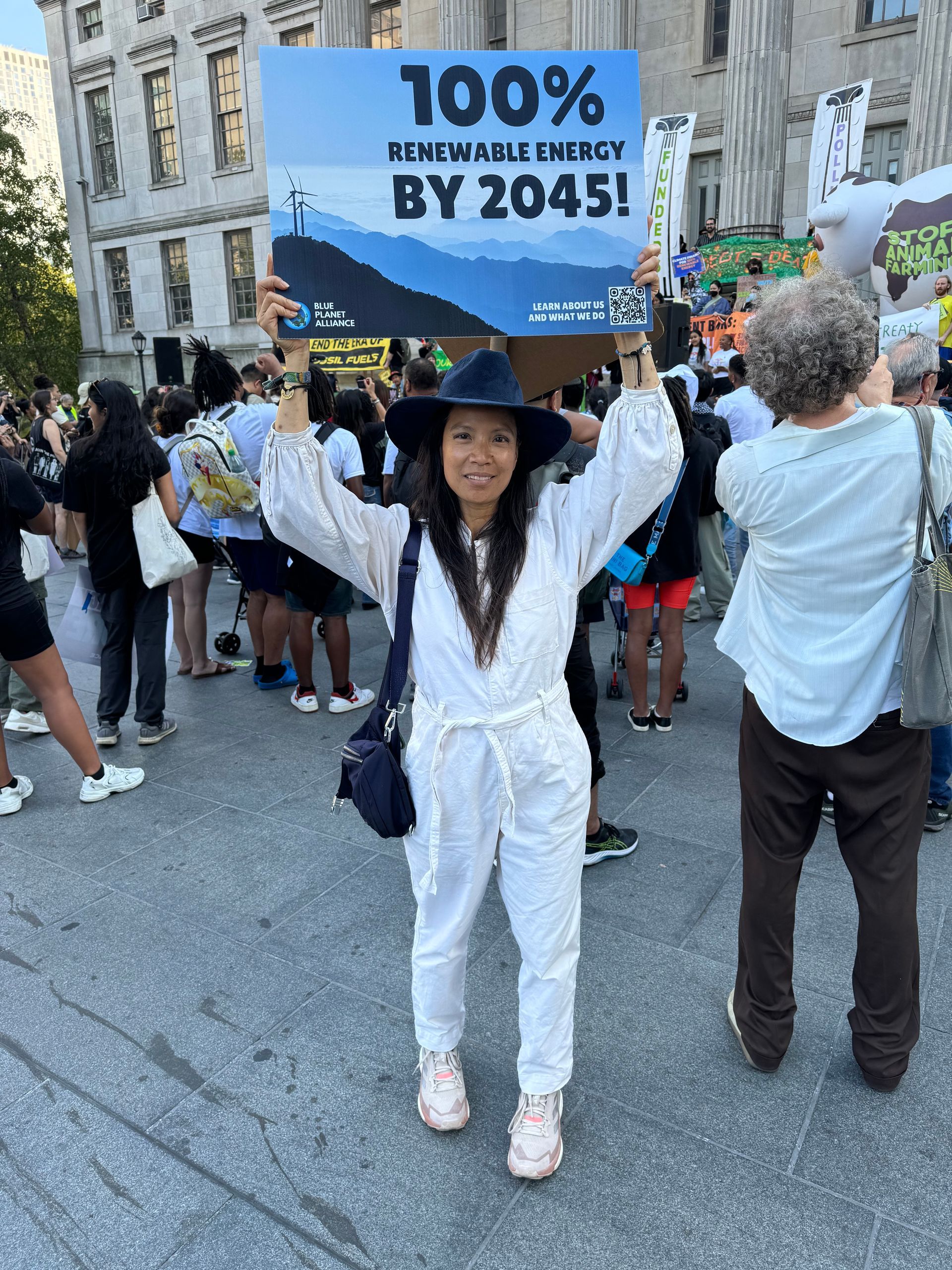From Hyper Consumer to Carbon Minimalist
A reckoning of how I lived and worked contributed to climate change...

I’ve made a well-paid living as a consumption instigator and am now atoning for my sins. I was formerly a tech startup entrepreneur and a fashion e-commerce exec who was profiled by Plum Sykes in Vogue and described as “an executive Bond girl.” Jason Binn featured me in the premier issue of Gotham Magazine with Liv Tyler on the cover as one of twelve “Gotham Girls Who Run New York” along with heiresses Nicky Hilton and Casey Johnson and was dressed in Oscar dela Renta for the spread. For my work as a CEO who raised millions for my e-commerce startup boutiqueY3k in 2000, Jason Calacanis’ Silicon Alley Reporter included me among the inaugural “Silicon Alley 100” where real estate magnate Bill Rudin and Elon Musk BFF Adeo Ressi were also included. So why did I give up my loft apartment, give away all my clothes, and pack my dog, my son and one suitcase to live in a solar-powered treehouse in Tulum?
I was one of a handful of women startup CEOs when I founded boutiqueY3k in 1998 which I bootstrapped for two years prior to getting funded by VCs. The businesses I launched generated plenty of carbon especially when I helped enable European luxury brands such as Burberry, Frette and La Perla to sell goods 24/7, in multiple languages and currencies to customers around the globe. The campaigns I helped create and websites I’ve managed drove millions in sales and drove shoppers to click and purchase whatever they wanted whenever they wanted. With the right pictures and copy we could sell almost anything within 5 clicks and in less than 3 minutes — from $150 dog bowls to $4000 duvets. We tracked customer data and purchase habits and were privy to when Wall Street bankers would purchase 34B and 36DD bras and which went to wives versus mistresses. We spent hours strategizing on how to attract customers we didn’t previously have and deployed geo-targeted ads based on whether customers drove a Mercedes or a Prius or drank sauvignon blanc or craft beer. I myself had closets full of designer clothes as dressing the part of a luxury customer was necessary especially when my office was right next door to Bergdorf’s and across the street from the Plaza Hotel. When I was being recruited by private equity firm JH Partners in 2006 to work for their portfolio company La Perla I was given a $30,000 annual clothing allowance as part of my package on top of a six figure salary. When I spearheaded the launch of Burberry’s e-commerce business in 2003, I dressed my toddler son in Burberry polo shirts, outerwear, and boots and sent him to a posh pre-school in the Upper East Side. I received a bonus when at launch we oversold our inventory by $1.5 million and had to pull merchandise from the flagship 57th Street store to fulfill orders. My venture-backed startup StyleTrek which Cathy Horyn featured on the front page of the NY Times Style section in 2010 carried crowd-sourced fashions and accessories from Argentina to Bali including now fashionista fave Nanushka from Budapest. During this time, I drove my son to school in a Mercedes-Benz ML350 black SUV on my way to work totally oblivious of the amount of carbon I was emitting. I was a pioneer in cross-border commerce and StyleTrek sold fashions to over 90 countries. So yes, I was complicit in the 22% of global CO2 emissions stemming from the production of goods that are, ultimately, consumed in a different country.
In Tulum we explored the deserted beaches full of sea turtle nests, rode our bikes on empty streets where crabs basked in the sun, and and swam in the warmth of the Caribbean Sea from sunrise to sunset. On our walks we picked up plastic that washed up on the shores — apparently originating from consumers coming from 52 countries. At times our solar power ran out — fans, lights and wifi would shut down. We gladly traded the climate-controlled buildings of New York City for the off grid life along with sounds of birds, bugs and coati living in the mangroves. My long haul covid — chest pains, lethargy, and dizziness and Mateo’s depression lifted within 5 days. I made our meals on the two burner propane stove on the terrace facing the mangrove forest with groceries we bought at Super Aki, accessible via a 30-minute bike ride into town. Fresh mangoes, papayas and grapefruit costing less than a dollar a pound arrived via a truck that passed by twice a day. We settled in our simpler life, filled our lungs with pollution-free oxygen, preferring our one room solar powered treehouse over the 2 bedroom loft we left in NYC.
I had plenty of time to think of our lives back in NY while away from the bombardment of the 24/7 CNN & FOX news cycle — our treehouse had no TV and only intermittent wifi. Our solar powered electricity would also cut out if two of us spent too much time on our MacBooks. To co-work with more stable wifi for zooms, we biked to a nearby hotel and booked day access passes for $20. In June 2020, most of the hotels in Tulum were closed and had laid off their employees. At the supermarket I met unemployed yoga teachers who made sandwiches and sold them in the parking lot for income. On the beaches Mexican children as young as 5 whose parents were unemployed from lack of tourism would come up to us to sell coconuts they took down from trees that lined the shores. Young women from Argentina would approach me and sell beautiful jewelry they hand-crafted at home for $15. We did my best to support the local economy.
My interactions with Mexican locals made me contemplate the expansive supply chains I had been a part of and the “Global E-commerce Checklist” keynote I delivered in Barcelona at the Global E-commerce Summit in 2011. Much of fashion and luxury goods have components made by lower-waged factories in Asia or South America, shipped to Europe and/or US then shipped to distribution warehouses and stores, so they can be packaged, shipped and sold to customers. As of 2019, 62 metric tons of apparel have been consumed worldwide. This number doesn’t include millions of excess inventory of which 30% are left unsold that often get trashed, wind up in landfills or shipped to Ghana. As many countries are now undergoing extreme heat, drought and water shortages, to know that it takes 10,000 liters of water to produce one kilogram of cotton or approximately 3,000 liters of water for one cotton shirt, it’s hard to digest that girls in Africa are being married off younger and younger in exchange for cows and goats as drought cause crops to fail and cattle to die. Plus textile dyeing requires toxic chemicals that subsequently end up in our oceans. Approximately 20% of the wastewater worldwide is attributed to this process, which accumulates over time. Is it possible to create Pantone’s color of the year without poisoning our waters and the planet? Don’t even get me started about cancer-causing micro-plastics from synthetic fibers made from petroleum and PFAs that are now winding up in the fish we eat and water we drink.
I don’t want to preach, but don’t we have enough brilliant and conscious business leaders and innovators who can lead the charge in producing more sustainably and support a more circular economy? We don’t want factory workers from Bangladesh to Bologna to be without jobs, but how can we have more efficient supply chains, scale back production based on demand, and stop polluting our planet with microplastic from fibers and toxic dyes?
According to the Environmental Protection Agency 85% of textiles ended up in landfills or were burned in 2018. A benefit of lockdown in the past few years, was that many bored consumers with time to kill Marie Kondo’d their closets and resold their clothes on sites like the The Real Real and Poshmark. According to Thredup, the secondhand clothing market is expected to triple and grow from from $28 billion in 2019 to $80 billion in 2029. Teens in particular even those who are from upper income households are buying thrift and supporting second hand marketplaces like Depop. I’m not surprised since I’ve been buying thrift since high school especially since I could not afford the brands or cuts I wanted back then. But during my 20s I started buying new and designer clothes “to look the part of the job I want” as magazines from Cosmo to Glamour preached on their pages. But something else is happening here — according to PiperSandler teens ranked environmental issues highly as a political and social topic they care about. Greta Thunberg’s efforts are clearly resonating with this age group. More brands are getting in on the action to control their resale price and get a piece of their second hand marketshare. Brands are now reselling their own pre-worn merchandise — Patagonia has wornwear.patagonia.com, Levi’s has secondhand.levi.com and Northface has thenorthfacerenewed.com.
After one month in Tulum, I decided to truly empty my nest. We returned to our Williamsburg apartment and we gave away all of its contents including a ficus tree, paintings I’ve purchased and created, and 8 wardrobe boxes of designer clothes and 5 boxes of shoes. In August 2020 I dropped off my son Mateo at Penn State to start his freshman year and two days later, boarded a plane back to Mexico with my dog Shorty and one suitcase. In the next two years I lived a low-carbon life in Mexico. I biked everywhere, lived in off-the-grid in un-airconditioned homes — from thatched roofed huts to tents, bought locally grown produce which I cooked myself and lived contently in my simpler minimal carbon lifestyle.
Now I’m back in the US, living nomadically, consuming consciously (buying local and circular), living minimally (out of a suitcase), plastic-free (no single use plastic). I'm still consuming but being more mindful and intentional with my purchases. Quality over quantity and researching brands from vitamins to footwear if they are ethical, sustainable, and are healthy for us and our children. I also have been intentional with brands I work with, accepting consulting projects with impact and sustainability minded companies who are creating amazing products while doing good.
I also started creating regenerative art and collaborating with innovators to call attention to the fragility of the world’s ecosystems to help promote circular construction and renewable energy.
Thank you for following my journey. If you are into sustainability, fighting climate change and would like to like to collaborate on projects that are good for humanity and the planet, please contact me.


